Does a Solar Panel Need Direct Sunlight?
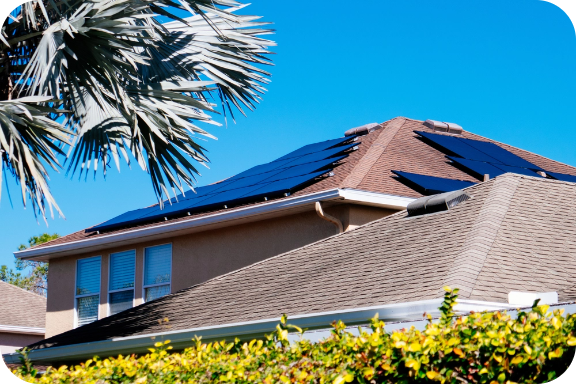
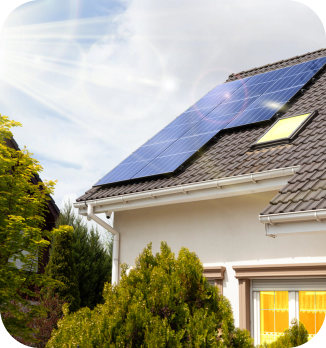
One of the most commonly asked questions is, “Do solar panels need direct sunlight to function?” Of course, solar panel production is best when they are receiving direct sunlight on a clear day but do solar panels work in the shade, and how can you ensure your panels function optimally in cloudy weather?
These are important questions that many homeowners ask – whether they live in a sunny southern state or in Northern regions that see more clouds and shorter days in the winter
When deciding to invest in solar panels, it’s important to consider various factors, including climate, budget, and efficiency. In this article, we’ll address what a solar panel needs to operate properly and how you can get the biggest bang for your buck.
Do Solar Panels Work in Shade?
Although direct sunlight allows for greater efficiency, solar panels can work in the shade. This largely depends on the quality of solar panels, as high-quality solar technology will minimize interference in energy production due to weather conditions and shade. Several other factors impact solar panel efficiency in the shade as well.
What Time Do Solar Panels Get Maximum Output?
Peak sunlight typically happens between 10 AM and 2 PM, depending on your location. This time window generally provides the greatest amount of light, and thus solar panel electricity production.
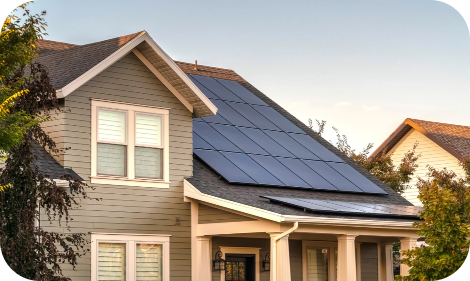
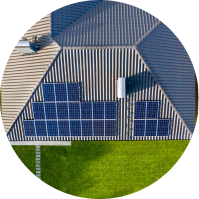
Duration of the Shade
Overcast skies cause panels to produce 10%-25% less energy than normal. Shade duration and direct sunlight on any area of the solar panel play a big role in this impact. When a portion of the solar panel is shaded, it creates a “hotspot,” causing the shaded cells to become warmer than the unshaded cells. This imbalance impacts electrical flow, reducing the overall output of the panel. The longer the shade duration, the greater the impact on the panel’s performance. Periodically check your solar meter monitors to ensure that kilowatt-hours are increasing, as this indicates your solar panel system is properly producing power.
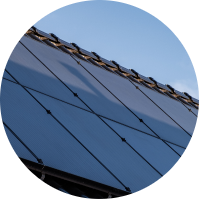
Location of Shading
The location of the shading on the solar panel also matters. If the shade falls on a small portion of the panel, only the shaded cells will be affected. However, if the shade covers a larger area, it can have a cascading effect and impact the performance of the entire panel or even the entire string of panels if they are connected in series.
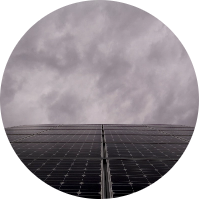
Overall Shading Level
The extent of shading on the solar panel surface plays a crucial role in its efficiency. Even partial shading, such as from trees, nearby buildings, or objects, can cause a significant drop in energy production. The more shaded the panel is, the lower its efficiency will be.

Technology Used in the Solar Panels
Standard solar panels utilize photovoltaic technology — a technology based on the principle of the photovoltaic effect, which occurs when certain materials like silicon or metal are exposed to sunlight and generate an electrical current. Newer solar panels take advantage of half-cut photovoltaic cell technology, which is designed to reduce the impact of partial shade. You may also consider taking advantage of solar batteries. These devices store excess electricity, which can then be used during cloudier weather conditions. On average, solar batteries last five to 25 years.
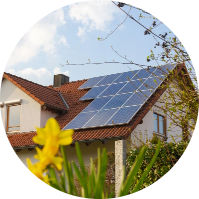
Panel Orientation
The performance of solar panels can be affected by their orientation in relation to the shading source. Panels that are aligned vertically or horizontally with the shading source may experience a greater reduction in efficiency than those positioned at an angle. The angle of incidence of the shaded light on the panel surface can also impact how effectively the panel converts it into electricity.
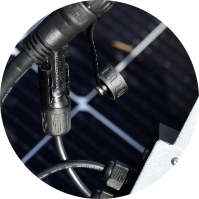
Type of Inverter Used
Solar panels use inverters as an essential component for converting the electricity produced into alternating current (AC) electricity, which is used in homes and businesses. Three types of inverters are most commonly used: string inverters, micro-inverters, and power optimizers.
Inverters and Shade Mitigation
Inverters play a crucial role in optimizing panel performance and mitigating the impact of shade on solar panels. Here are some of the most common types used and how they work.
String Inverters
This type of inverter is the most common type for solar panel systems. They are designed to handle the output of multiple solar panels wired together in a “string.” String inverters are a popular choice for residential and commercial solar installations, as they are efficient, reliable, and cost-effective.
Micro-Inverters
Micro-inverters are small, individual inverters attached to each solar panel in a system. They convert the DC (direct current) electricity from each panel into AC electricity at the panel level rather than a central location. This method often results in greater efficiency and flexibility in the system’s design; however, this is generally a more expensive option.
Power Optimizers
Power optimizers are installed at the panel level and help optimize the performance of each individual panel. They maximize the output of each panel by tracking and adjusting the maximum power point of each module. Power optimizers can also be used with string inverters and micro-inverters to increase the performance efficiency of a solar panel system.
How Does Weather Affect Solar Panel Efficiency?
Weather is a powerful component in the productivity of a solar panel system, so how do various elements affect efficiency?
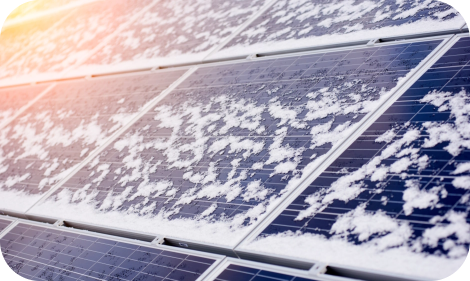
Rain & Thunderstorms
Rain alone doesn’t impacts solar panel output — but cloudiness can reduce solar output. When this occurs, system output can be up to 90% lower. While precipitation may cause temporary output losses, rain has the potential to clean solar panels, which can be particularly helpful if you live in a climate that causes your solar panels to collect dust. The overall impact of thunderstorms on solar panels depends on the severity of the storm and the quality of the solar panel system. Thunderstorms have the potential to cause significant cloud cover, slowing down the system’s productivity. These storms can also cause electrical surges, which pose a threat to electrical equipment. (We recommend installing surge protection devices in the solar panel system.) Although potentially hazardous, thunderstorms can also result in cooling the solar panels. If solar panels are overheated, a thunderstorm could actually have a positive effect.
Snow, High Wind, & Hail
While snow has the potential to block solar panels from receiving sunlight, it generally doesn’t pose a threat to the efficiency of a solar panel system as it usually melts due to the panels being aimed at the sun. Solar manufacturers must certify that their panels can withstand winds as high as 140 miles per hour. (CleanEnergyAuthority.com) As long as the solar panel system meets this criterion and the roof below is in proper condition, high winds should not threaten your solar panel system. If hailstones are large enough, they do have the potential to cause damage to solar panels. This includes physical damage and decreased performance quality due to cloud coverage. In addition, if hail interferes with wiring or other components of the solar panel system, there is potential for malfunction.
Do Solar Panels Need Direct Sunlight?
As we’ve outlined the various factors that play into the efficiency of solar panel systems, it is safe to say that solar power needs direct sunlight for optimum performance; however, if you live in a more shaded climate, there’s no need to worry. There are still plenty of options for taking advantage of this eco-friendly power option.
Interested in purchasing a solar panel system for your home or business? Don’t hesitate to reach out to the solar professionals at Axia Solar. We can answer any questions you may have, and we’re ready to help you make the switch to cleaner renewable energy.